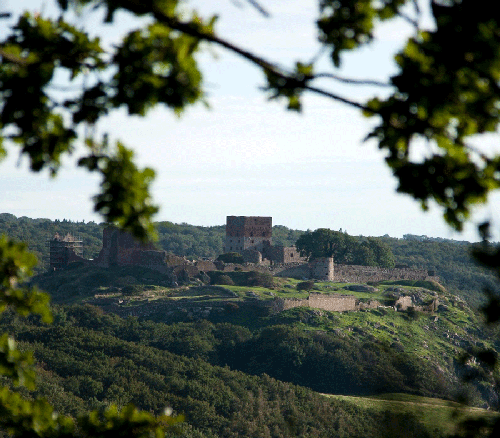- Denmark's biggest natural forrest 'Rold Skov' lies on a plateau, formed by the ice more than 18,000 years ago
- The Danish word 'friluftsliv' literally means 'living in the free air'
- In Denmark, there are approximately 35,000 plants and animals registered
Mild, Wild, Windy Denmark - and the tiniest mountain in the world

Denmark occupies a relatively small geographical area, but has a 8,750 km coastline and 400 islands.
From Denmark's northernmost town, Skagen, to the southernmost, Gedser, there are less than 550 km. Even if you avoid the fast highways and choose a slower scenic route, you can traverse the country's varied landscapes in a day.
Danish nature is approachable for everyone
The Danish Golden Age poet Adam Oehlenschläger called it "a lovely land" in 1819 in the poem that later became Denmark's national anthem and is still sung loudly at football matches across the country.
He praised the pleasant, mild, and friendly nature of Denmark, which still exists.
The hills in the mainland of Jutland and on the Danish islands are gentle, with meadows and pastures, heathlands with purple heather, light green beech forests, and several hundred-year-old oak trees. Across the country, east-facing beaches are sheltered and warm, and the streams and small rivers flow slowly.
Even Denmark's only mountain landscape, Søhøjlandet, in the middle of Jutland, is so approachable that anyone can climb it without fear, oxygen tanks, or crampons.
One mountain stretches 147 meters above sea level and is immodestly called Himmelbjerget (Sky Mountain), but it is surpassed a tiny bit by Møllehøj, the highest peak at 170.86 meters.

Did you know
A handful of wilder places
The wilder nature lies sporadically in between cultivated land. In the northwest corner of Jutland, known as the Shoulder of Jutland, the North Sea is fierce, eating away at slopes and cliffs.
In the Wadden Sea of South Jutland (part of the largest unbroken system of intertidal sand and mud flats in the world), the tides are so significant that you can lose your bearings on a foggy day.
On the island of Møn in the Baltic Sea, the white cliff of chalk stands tall and dramatic with a risk of landslides. The country's easternmost island, Bornholm, is entirely unique and stands out with its impressive granite cliffs.
The rocky island has a different story from the rest of the country. Geologically, Bornholm resembles neighboring Sweden and is the remnants of an ancient mountain range that runs up through Sweden. The rest of Denmark is shaped by the most recent ice ages. The ice cut into the land like an icebreaker, leaving behind areas hilly. And the meltwater carved ravines into the terrain, which are still visible today.


Change is here to stay
Millions of years of natural history do not end here.
Nature in Denmark is in constant change. Some changes are decided by the authorities to give biodiversity better conditions—including the conversion of cultivated land into forests and natural areas. Other changes follow climate changes, which make Denmark wetter, warmer, and windier.
Also, nature itself creates changes as it has done always and always will: the sea eats away at slopes and cliffs. Lakes fill up. Streams find new paths. And sand is blown by the wind bit by bit in an almost unreal amount. Råbjerg Mile, Denmark’s largest migrating dune with 3.5 million cubic meters of sand, continues its path year after year from west to northeast with 15 meters a year, regardless of the passage of time.
We also recommend
-
kingdom of denmark The Faroe Islands
The Faroe Islands consists of 18 islands in the North East Atlantic. The beautiful green islands are a self-governing part of the Kingdom of Denmark.23.07.2025Read more -
Kingdom of denmark Greenland: The world's largest island
Greenland is officially the world’s largest island that is not a continent. Home to 56,000 people, Greenland has its own extensive local government, but it is also part of the Realm of Denmark.26.06.2018Read more -
CULTURE The history of Denmark
Since the end of the last Ice Age - approximately 10,000 BC - people have migrated from the Eastern and Southern parts of Europe to the Northern area we now know to be Denmark. The flat terrain, rich soil, close proximity to water and at times harsh climate, has shaped Danish history and culture ever since.30.05.2018Read more


